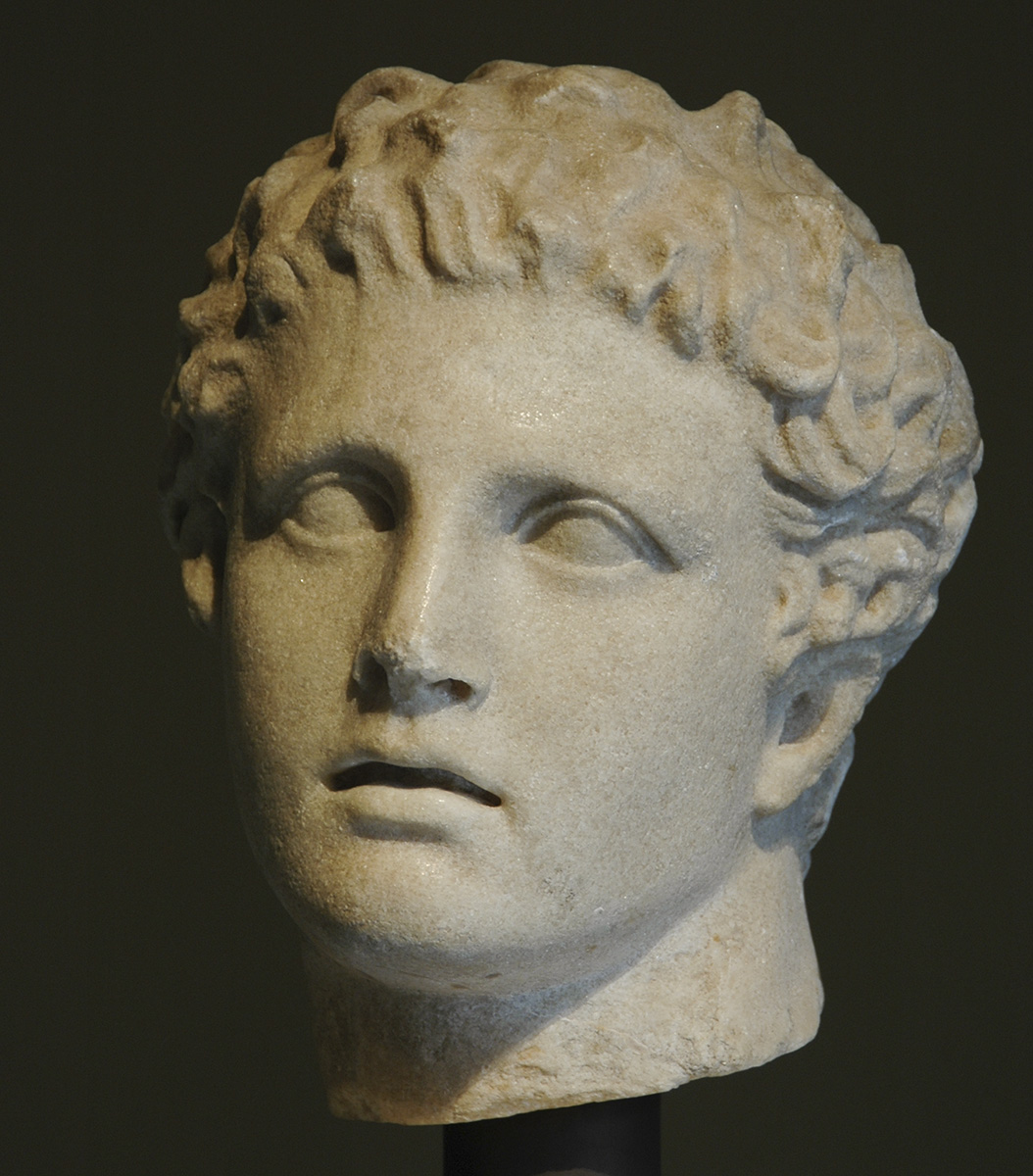
Height 30 cm. Inv. No. I 1283.Vienna, Museum of Art HistoryPhoto by Sergey Sosnovskiy
Head of Meleager.
Height 30 cm.
Vienna, Museum of Art History
(Wien, Kunsthistorisches Museum).
The head entered the Collection of Greek and Roman Antiquities from the Este collection in 1923. It was part of a statue of a type that has been preserved in another Roman copy at the Vatican. There Meleager is depicted as a hunter taking a break after having killed the boar. The hunting spear is leaning against his left shoulder, and his right hand is placed in a relaxed position on his back. This state of relaxation is only internal, however; the hero appears to sense his tragic fate. His head is turned in a lively manner towards his left shoulder, his deep-set eyes gaze into the distance, and his mouth is open in an expression of impassioned tension. Emotional expression and restless motifs of motion — elements that had an important influence on the development of Hellenistic sculpture — are stylistic features connected with the sculptor Scopas from the island of Paros. Particularly in the figure of a dancing Maenad, an impression of which is conveyed by a smaller copy in the Dresden Albertinum, emotionalism and impassioned motion are heightened to the point of ecstasy. Partially preserved pedimental sculptures of the Temple of Athena Alea at Tegea (Arcadia) provide a basis for judging the art of Scopas. In the eastern pediment of the temple, on which Scopas worked as an architect, is a depiction of the Calydonian boar hunt. Together with the artists Timotheus, Leochares and Bryaxis, Scopas also created the sculptural decoration for the giant tomb of the tyrant Mausolus in Halicarnassus soon after 350 BC.
Text: museum inscription to the sculpture.
© 2006. Description: A Brief Guide to the Kunsthistorisches Museum. Edited by Wilfried Seipel. Vol. 4. Masterpieces in the Collection of Greek and Roman Antiquities. Kunsthistorisches Museum. SKIRA, 2006, p. 52, cat. no. 13.